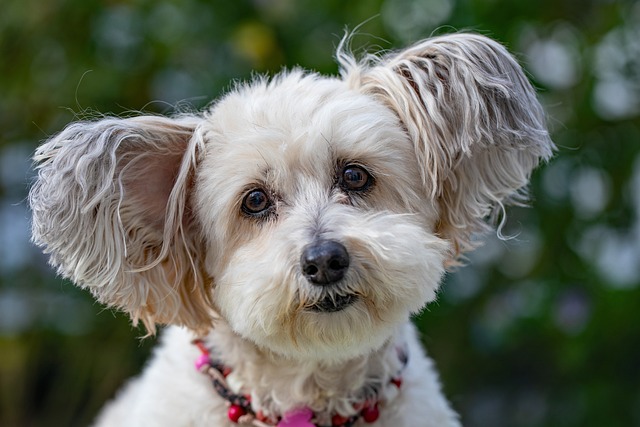
How Can You Tell If Your Dog Is Truly Full
Watching your dog lick their bowl spotless often feels reassuring – surely they’re satisfied? But that clean dish doesn’t always mean a full belly, and constant begging can leave you second-guessing.
If coming home to find your dog panting by the door, with a fresh puddle of vomit beside them. You haven’t fed them for hours—could their separation anxiety be making them sick? Let’s unpack the science behind how emotional stress affects a dog’s stomach, using real-world examples from pet parents.
Separation anxiety triggers the "fight or flight" response. When dogs feel abandoned, their bodies release cortisol, a stress hormone. My Border Collie, who panics when left alone, often vomits within minutes of my departure. Studies show cortisol disrupts the stomach’s normal rhythm, leading to nausea.
The brain-gut connection is powerful in canines. Vets explain that anxiety signals from the brain can relax the esophageal sphincter, causing stomach contents to rise. My Labrador retriever developed a pattern: vomiting 20–30 minutes after I left for work, even on empty stomachs.
Acute vs. chronic anxiety shows different symptoms. Sudden vomiting during a single stressful event (like moving homes) is acute stress. But repeated vomiting every time you leave suggests chronic separation anxiety. A friend’s Poodle vomited daily until they addressed her anxiety disorder.
Know the difference between vomiting and regurgitation. Anxiety-induced vomit is often foamy or contains yellow bile (from an empty stomach). Regurgitation—where undigested food comes up—signals a physical issue. My Shiba Inu’s anxiety vomit is always bile-stained, especially on days I leave early.
Medical checks first—never assume anxiety alone. Before blaming behavior, rule out infections, blockages, or food allergies. A client’s Beagle vomited due to a sock stuck in his intestine, not separation anxiety. My vet insists: "Always start with a thorough exam."

Environmental factors worsen anxiety vomiting. Changes like new furniture, loud construction, or even a different departure routine can spike stress. My Aussie mix vomited more when I switched to a noisy electric car—he associated the hum with me leaving.
Desensitization training can reduce vomiting. By gradually increasing my absences (5 minutes, then 10, then 30), my rescue mutt’s vomiting decreased. Pairing departures with high-value treats (like frozen peanut butter in a Kong) turned "alone time" into a positive experience.
Medication may be needed for severe cases. For dogs like my neighbor’s German Shepherd, vets prescribe SSRIs like fluoxetine to manage chronic anxiety. His workday vomiting stopped within weeks of starting treatment, combined with behavior therapy.
Understand local animal welfare laws. In Germany, the Animal Welfare Act requires owners to address conditions like anxiety that cause harm. In the US, some states consider untreated separation anxiety leading to illness as neglect. Proper care isn’t just compassionate—it’s legal.
Diet modifications soothe an anxious stomach. Adding probiotics to my dog’s food helped restore gut health, while small, frequent meals reduced vomiting risk. A vet recommended 1/4 teaspoon of ginger (dried or fresh) per 10 pounds to ease nausea—natural remedies that complement training.
Your departure routine matters. Rushing around before leaving signals stress to your dog. I now practice calm exits: grab keys without fanfare, say a quiet "see you soon," and leave without lingering. My dogs vomit less when they sense no drama.
The human-canine bond plays a role. My anxious dogs mirror my energy—if I’m calm, they stay calmer. Practicing deep breathing or listening to music before leaving sets a relaxed tone. Your emotional state during departures directly impacts their stress levels.
Separation anxiety and vomiting are deeply connected, but treatable. For my pack, a combo of training, environmental tweaks, and vet-guided care ended the vomiting cycle. If your dog vomits when you’re away, start with a vet visit, then develop a behavior plan. With patience, you can ease their anxiety—and their upset stomach.

Watching your dog lick their bowl spotless often feels reassuring – surely they’re satisfied? But that clean dish doesn’t always mean a full belly, and constant begging can leave you second-guessing.

We’ve all seen it – your dog attacks their meal like it’s their last, inhaling kibble in seconds without a single chew. While it might seem comical or just enthusiastic,

Spotting your dog seeming a bit "off" – maybe slower to get up, less playful, or even trembling – can instantly make any pet parent worry. Could it be a lack of calcium?

As a Chow Chow owner, those iconic triangular ears—when upright—frame their lion-like mane beautifully. But if your pup’s ears stay floppy or only partially rise, it’s natural to feel concerned.

As a dog parent, it’s natural to look for simple, household solutions when your furry friend is dealing with common issues like mild odor, damp fur, or occasional skin discomfort.

Bringing a Corgi into your life means welcoming a bundle of joy—those tiny legs, fluffy backside, and a personality that’s equal parts feisty and affectionate.